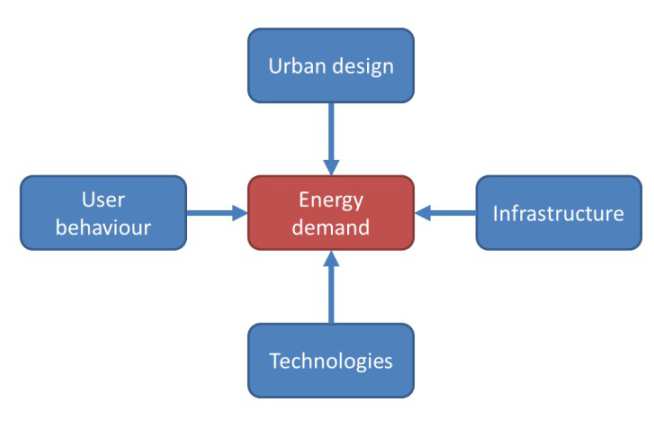Load forecasting of electricity and heat demands
Overview
The Load forecasting of electricity and heat demands in urban areas through agent-based modelling project was led by Professor Nilay Shah and Dr Christos Markides, and the work team was composed of Dr Salvador Acha, Dr Koen van Dam, and Gonzalo Bustos, all from the The Sargent Centre for Process Systems Engineering (CPSE).
The project was part of the EDF FlexiFund, a collaboration between Imperial College London and EDF Energy. This initiative enables short-term exploratory projects in areas of common interest to both. The expectation from these precursor projects is that they could lead to longer-term research projects in the College.
The project focussed on understanding the influence of end-user behaviour and technology adoption on the energy demand of urban areas/smart cities. Funded by EDF Energy R&D UK Centre, the team applied a novel agent-based simulation approach to characterise and generate energy demand profiles with a high spatial and temporal resolution which can be used by EDF to better understand demand for heating and electricity and plan new infrastructure and services.
Case study
--tojpeg_1461150561454_x2.jpg)
The team used the Isle of Dogs, part of the London Borough of Tower Hamlets in East London, as the case study in which the methodology could be tested. This urban area presents a mix of non-domestic and domestic dwellings built in various periods with different levels of density and the site still has potential for development. According to the Office for National Statistics, in 2011 42,000 people resided in Isle of Dogs, and due to the Canary Wharf financial district it is estimated 93,000 people work in the area.
Approach
In this work, an agent-based modelling (ABM) approach was used to simulate the energy demand for the urban area based on the activities of the residents and non-residents as well as the urban layout, the technical characteristics of the buildings and available infrastructure (see Figure 2).

In ABM agents are computer representations of decision makers in the system to be analysed, simulating for example households, drivers, companies, etc.; interacting with each other as well as with their environment. This type of simulation model is particularly suited to describe systems in a bottom-up way, because it generates outputs at the system level from the actions of individuals, thus giving flexibility in testing different scenarios that can have an impact on the final energy demand.
This approach has previously been used in CPSE, for example to analyse the impact of smart charging of electric vehicles on the grid or to experiment with different urban master plans for sustainable district, but for this project the model was extended to include detailed modules for electricity and (space) heating demands.
Results
The results are generated at the Medium Super Output Area level (MSOA). This spatial unit was chosen for the analysis given the availability of data. After collecting and processing multiple data sets from different sources the model could be populated with a synthetic population and the electricity as well as heat demand were simulated for four typical days of the year: summer (weekday and weekend) and winter (weekday and weekend). With this, energy profiles for residential buildings can be generated for the Isle of Dogs area.
After establishing the baseline scenarios, alternative simulations were conducted to showcase some of the flexibility and value the modelling approach offers. These alternative scenarios are in the form of different comfort temperatures and improvements in building energy efficiency ratings. These simulations depict how load profiles can vary for each MSOA as an effect of these interventions.
Findings
This project demonstrated the flexibility and applicability of the agent-based modelling approach for holistic analysis of urban energy systems while also providing results at fine spatial and temporal resolution; thus having the potential to become a valuable support decision tool for key stakeholders who make decisions on urban sustainability.
The outcomes will now be used in educational activities at CPSE, with several MSc students on Energy Futures Lab’s Sustainable Energy Futures course using the model in their final thesis project. Further work will cover the calibration of the model as more spatial and temporal data is collected from different sources as well as using these energy profiles for the analysis of different low carbon heat supply scenarios.


